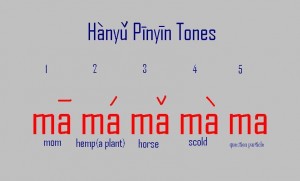Lessons in Mandarin 101: Tones and how you say “I’m sorry” “How are you” and “I’m good, thank you”

Since Singapore is a multi-cultural country, primary and secondary students here are required to take up a mother tongue class, as part of the curriculum. If you’re a local, the options include Mandarin, Malay, Tamil, among others. Foreign students might be exempted, but they are encouraged to try taking the mother tongue class first. If the student is really having a difficulty in learning the language, he has an option to shift to a different mother tongue class. The last option for a student is to take a foreign language course of their choice (French, German, Spanish, Japanese etc) from a different institution.
Ethan started taking Mandarin lessons since nursery, but since I’m not a speaker nor do I understand Mandarin, we really find it challenging. Mandarin is a very complex language for us and we are always overwhelmed by it.
So, why this post?
The reason for this post is to share with you some of the things we have learned from his previous lessons in school. Let’s try the easiest method first– the Hànyǔ Pīnyīn which is the phonetic system for transcribing the sound of Chinese characters.(sourtce:http://en.wikipedia.org/wiki/H%C3%A0ny%C7%94_P%C4%ABny%C4%ABn)
You might find this helpful if you’re really interested to learn, my kids and I are still works in progress, so we say duì bu qǐ (sorry) to all of you listening, if in case we mispronounced the words. But we will try our best. Anyways, let’s just have some fun speaking and listening!
————————————
Duì bu qǐ by the way is how you say sorry in Mandarin. (source: http://mandarin.about.com/)
Wait! Before we start speaking in mandarin, we should learn the tones first.
Noticed the sign above the letters of Hànyǔ Pīnyīn? Those will be our clues on how we should pronounce each syllable. As you all know, the exact same words have different meanings in mandarin when you pronounce it in four different ways. We are currently practicing these tones, and it really is quite confusing, but here is a simple tip that Ethan and I came up with. Try moving your head as if you’re writing the tone symbol in the air.
- First tone –is the straight line above the vowel. For example…
| mā | mom | starts high and stays there |
2. Second tone – is a slant line above the vowel, rising from left to the right, for me, it is like when you call your mom, when you need something from her… like… ma? pa?
| má | Hemp (a plant) | starts at mid-range and ends high |
3. Third tone – is like a letter v on top of the vowel. The easiest of all. It’s like making your voice dig in the air and rise again.
| mǎ | horse | starts mid-range, dips low, goes back to mid-range |
4. Fourth tone- the opposite of the second tone. The symbol is like a slant from the upper left to the lower right. A friend of mine says it’s like saying “NO!” with conviction, so we take his tip.
| mà | scold | starts high and ends low |
Wait again! There is a neutral tone.
Neutral tone- If there’s no symbol on top of the vowel, it means it is in the neutral tone.
| ma | question particle | neutral tone |
Here is an example using the question particle “ma”
M: Nǐ hǎo ma? (How are you?)
E: Wǒ hěn hǎo, xièxiè, nǐ ne? (I am good, thank you, and you?)
M: Wǒ hěn hǎo, xièxiè. (I am good, thank you.)
Thanks for listening! 🙂
